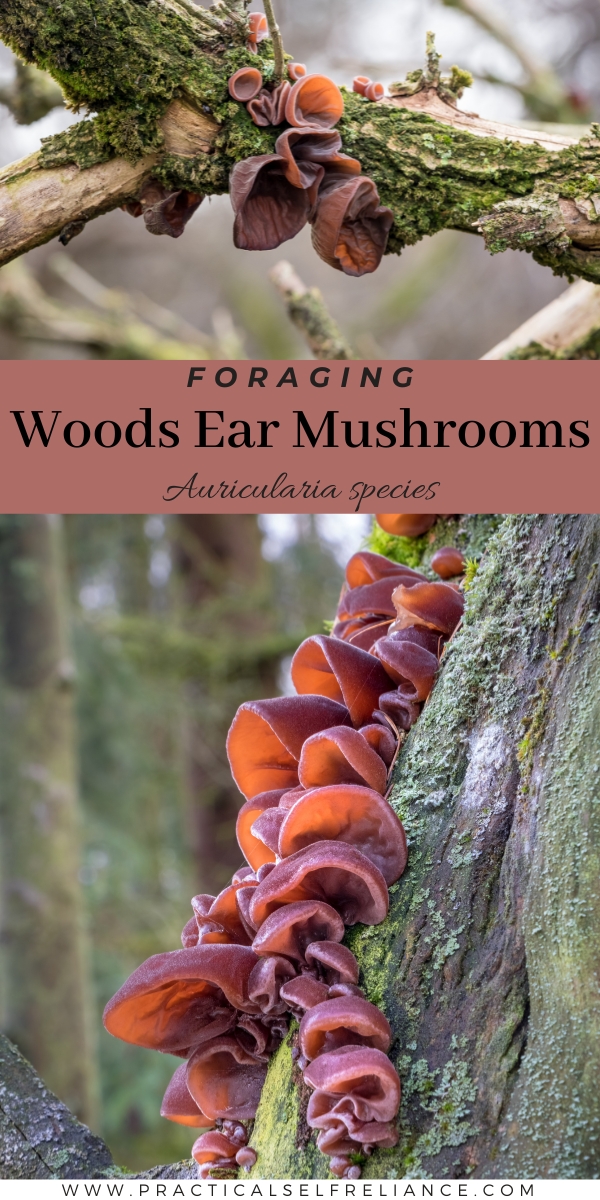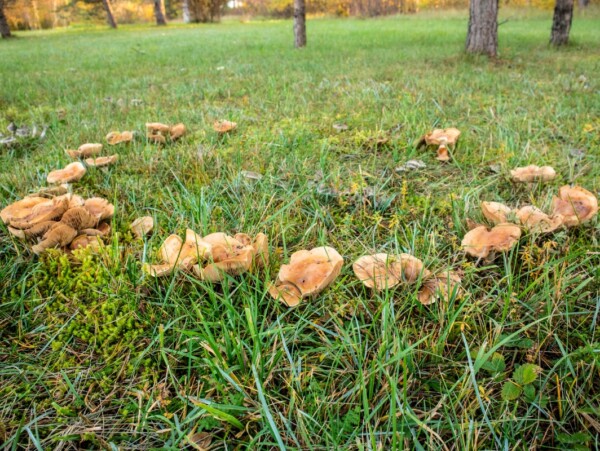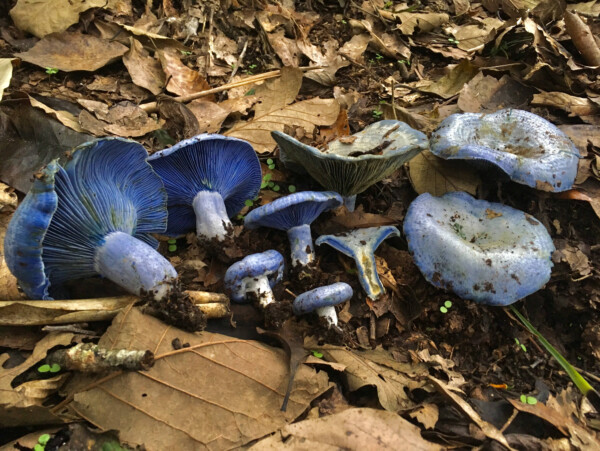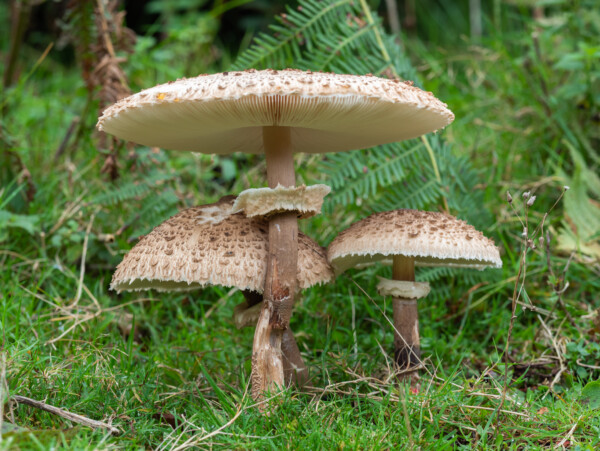Affiliate disclosure: This post may contain affiliate links. Please see our Privacy Policy.
Wood Ear Mushrooms (Auricularia sp.) are easy-to-find wild edible mushrooms, and they’re valued in Asian countries for both their culinary and medicinal uses.
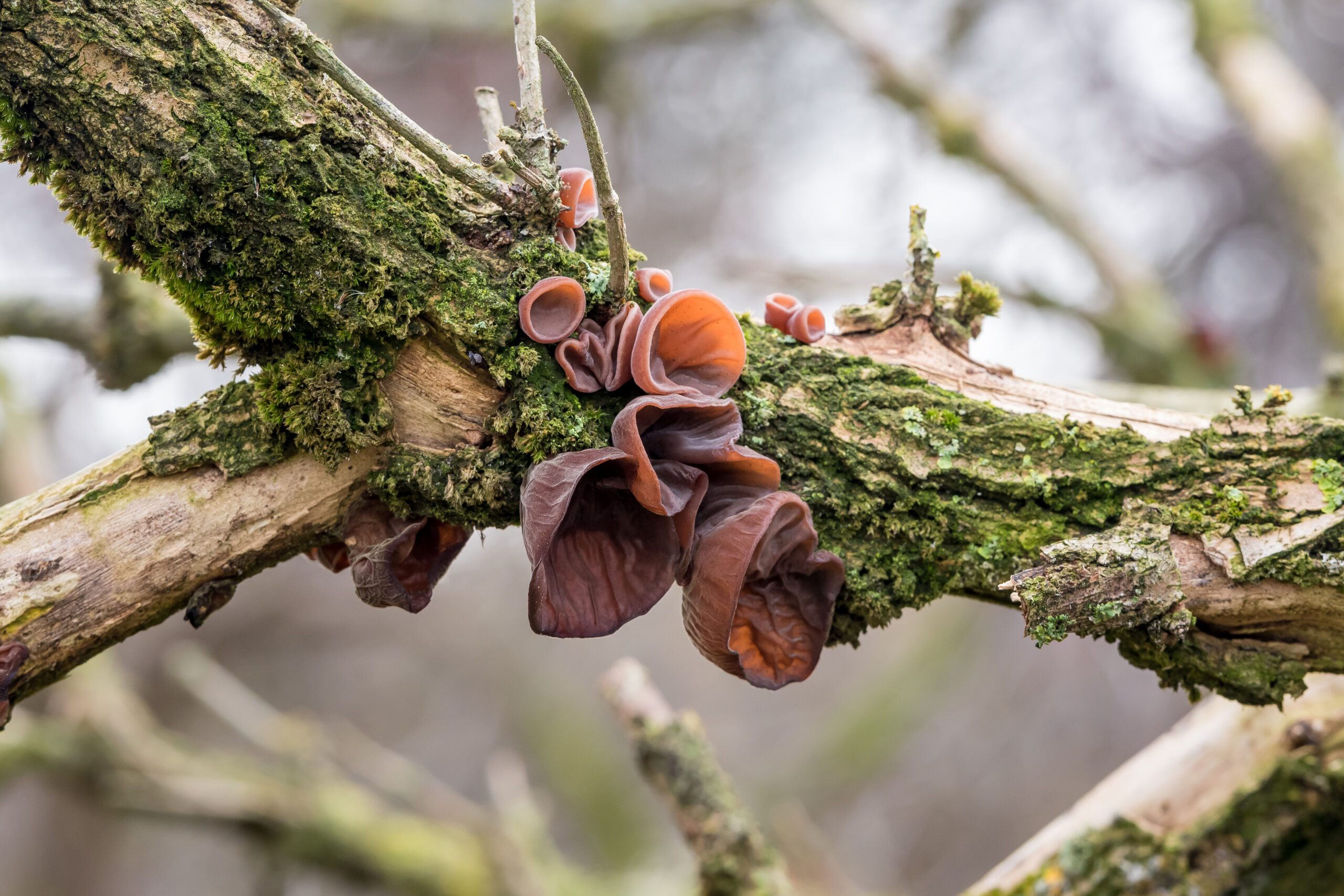
This article was written by Timo Mendez, a freelance writer and amateur mycologist who has foraged wild mushrooms all over the world.
Wood Ear Mushrooms – they’re strangely shaped, have an unusual texture, and they´re delicious if you know how to use them. They´re really unlike any other mushroom or any other food item I can think of, for that matter. It’s what makes them so special in the world of mushrooms, even though foragers often reject them for being so unusual.
Don’t just take my word for it; Wood Ears (Auricularia) are highly prized in Asian cultures as a culinary and medicinal mushroom.
While most of us accustomed to a Western diet have never craved them, in other parts of the world, they are a pretty big deal. After all, they’re one of the most consumed mushrooms in the world and the second most cultivated mushroom after shiitake. For many of us, it’s a lot easier to forage them in our local woods than to find the cultivated ones in the grocery store.
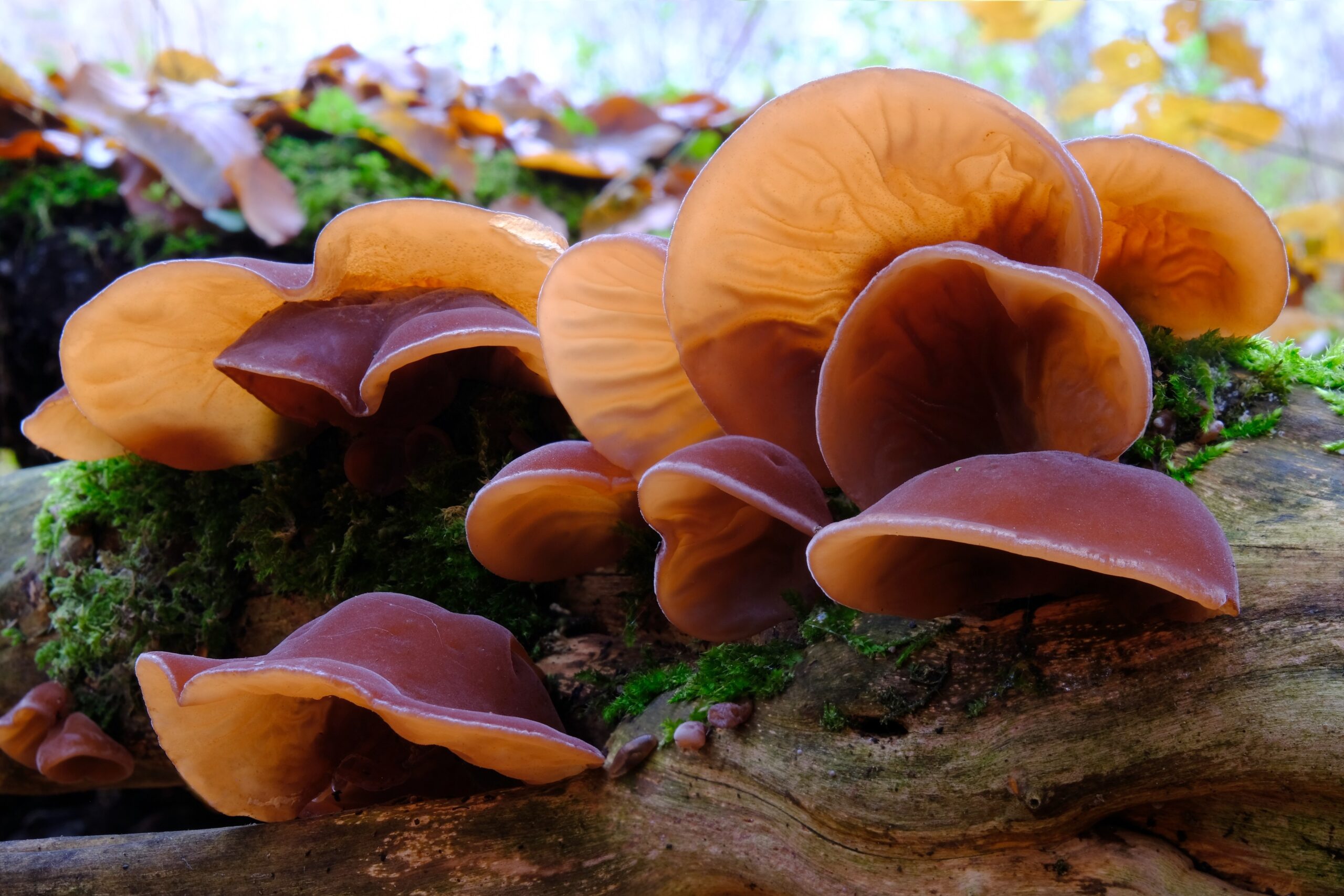
If you frequent the woods much during mushroom season, you probably know this. There’s a high chance you’ve seen these unusual ear-shaped mushrooms growing from the side of decaying wood. They’re gelatinous, chewy, rubbery, and just generally strange. Oftentimes, they do look like a human ear.
While many people disregard them as edibles for being so unusual, for me and many foragers, it is precisely what makes them so attractive. It’s a new set of flavors, textures, and culinary qualities that don’t exist in any other food item. This, after all, is one of the most exciting parts of eating wild mushrooms.
If you’re not feeling too creative, you can find many existing recipes that feature this mushroom. You may have even tried it before in hot and sour soup, which is often served in Chinese restaurants. Oh yeah, and they are also great dried (and they dry easily) and offer functional health benefits to your meal, so who doesn’t love that?
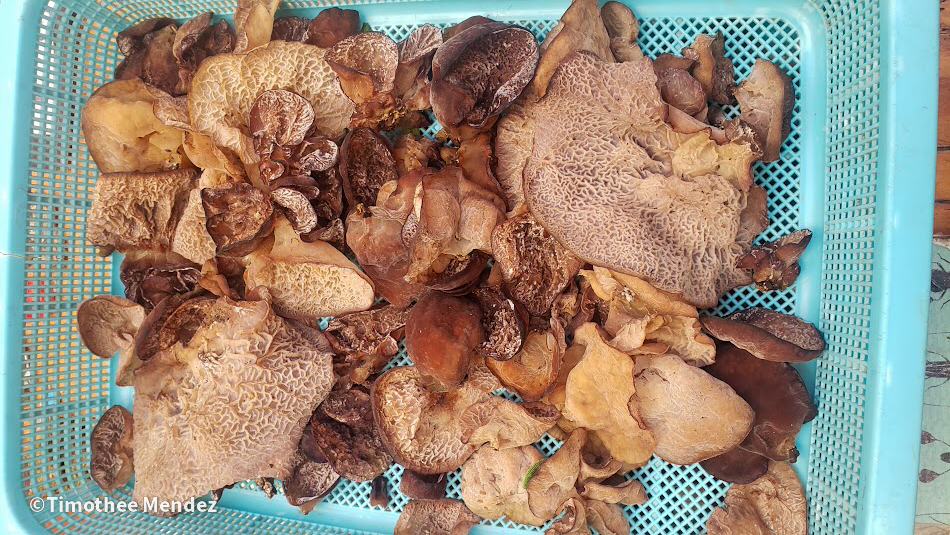
Natural History
As the name implies, wood ear mushrooms grow from wood and look a lot like the human ear. They are typically brown-translucent to black and have a distinctive rubbery and jelly-like texture. They are considered a type of jelly fungi, which is a category of mushrooms that includes other gelatinous mushroom species.
Wood Ears are in the genus Auricularia, which includes more than 30 species that are found across the world. While many of the species look pretty similar, most have distinct morphological features and geographic distributions. Many species used to be classified under the single species name Auricularia auricula-judae due to their similarities, but they have since been split up. All true Auricularia species are considered edible, although some do have preferred culinary properties.
Generally speaking, most species grow from the decaying wood of broadleaf shrubs and trees. This includes elderberry, willow, oak, liquid amber, maple, beech, and many others. Some Wood Ear species, such as Auricularia americana, grow on conifer wood. As decomposers, they play an important role in the nutrient cycle and can be found growing on woody stems, branches, trunks, and bases of dead trees and shrubs. They can also be found on living trees. While they are found almost everywhere, Wood Ear mushrooms are particularly prolific in tropical regions.
One of the most impressive things about Wood Ear mushrooms is their ability to withstand a wide range of climatic conditions.
They can be found fruiting in extremely wet and cold conditions, but also in dry and hot conditions. Fruiting bodies can almost completely dry up and then quickly rehydrate during an intermittent shower. This makes them particularly attractive to foragers near the beginning and end of the mushroom season when there isn’t anything else to be found.
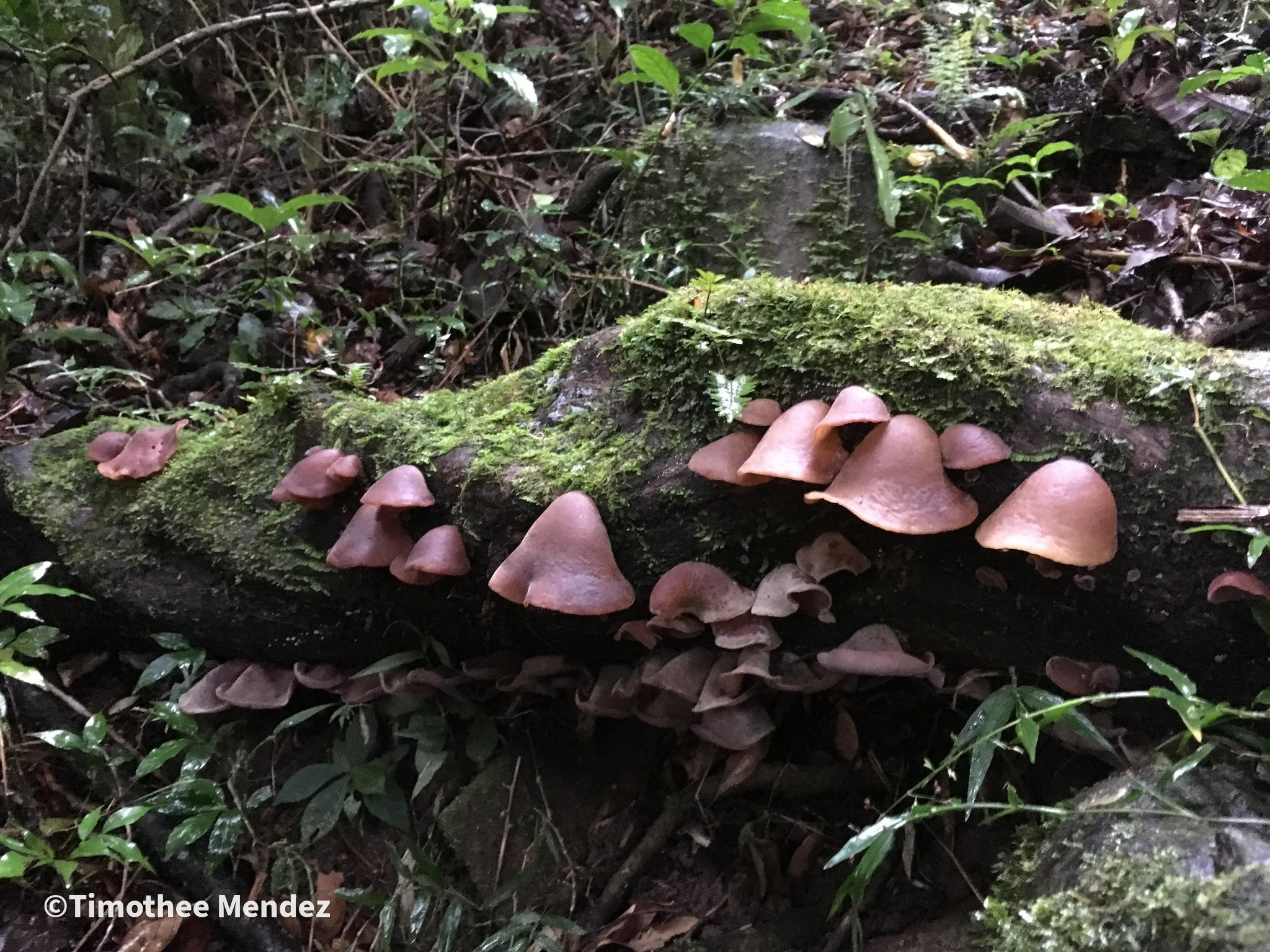
Medicinal Properties and Cultural History
While Wood Ear mushrooms are most known from Chinese culture, there are reports of their traditional use in many parts of the world. This includes countries such as Mozambique, Nigeria, Chile, Mexico, Poland, Fiji, and many others, although they are not usually considered highly prized. In Europe, this mushroom is often known as “Judas Ear” since it commonly grows on elderberry, the tree species from which Juda hung himself in the Bible.
All aside, nowhere else is this mushroom more appreciated than in Asian cuisine. While its flavor is very mild, it does contribute substance and an interesting texture to stir-fries and soups. Perhaps more importantly, Wood Ears are valued as an ingredient due to the belief that they improve the well-being of those who consume them. Like many medicinal food items, Wood Ears are incorporated into specific recipes for their health-promoting properties.
In traditional Chinese medicine, wood ear is valued for its tonifying properties, which give strength to the mind and body. They are particularly valued for health issues related to blood and blood circulation. While the medicinal qualities of Wood Ears have been valued in folklore for thousands of years, they have also been investigated by modern-day researchers.
Potential Health Benefits Of Wood Ear Mushrooms
- High in Antioxidants (1)
- May Help Against Diabetes (2, 3, 4),
- Have Anti-inflammatory Properties (5, 6)
- Could Help With Cancer Therapy (7, 8, 9)
- May Help with Weight Loss (10, 11)
- Improve Immune Function (12, 13)
Identifying Wood Ear Mushrooms
Wood Ear mushrooms are pretty easy to identify once you get a hang of them. While they do look different depending on the species, most of them have the same diagnostic features. All true Wood Ears in the genus Auricularia are edible, so it’s not often necessary to pin them down to species if you just want to cook them up.
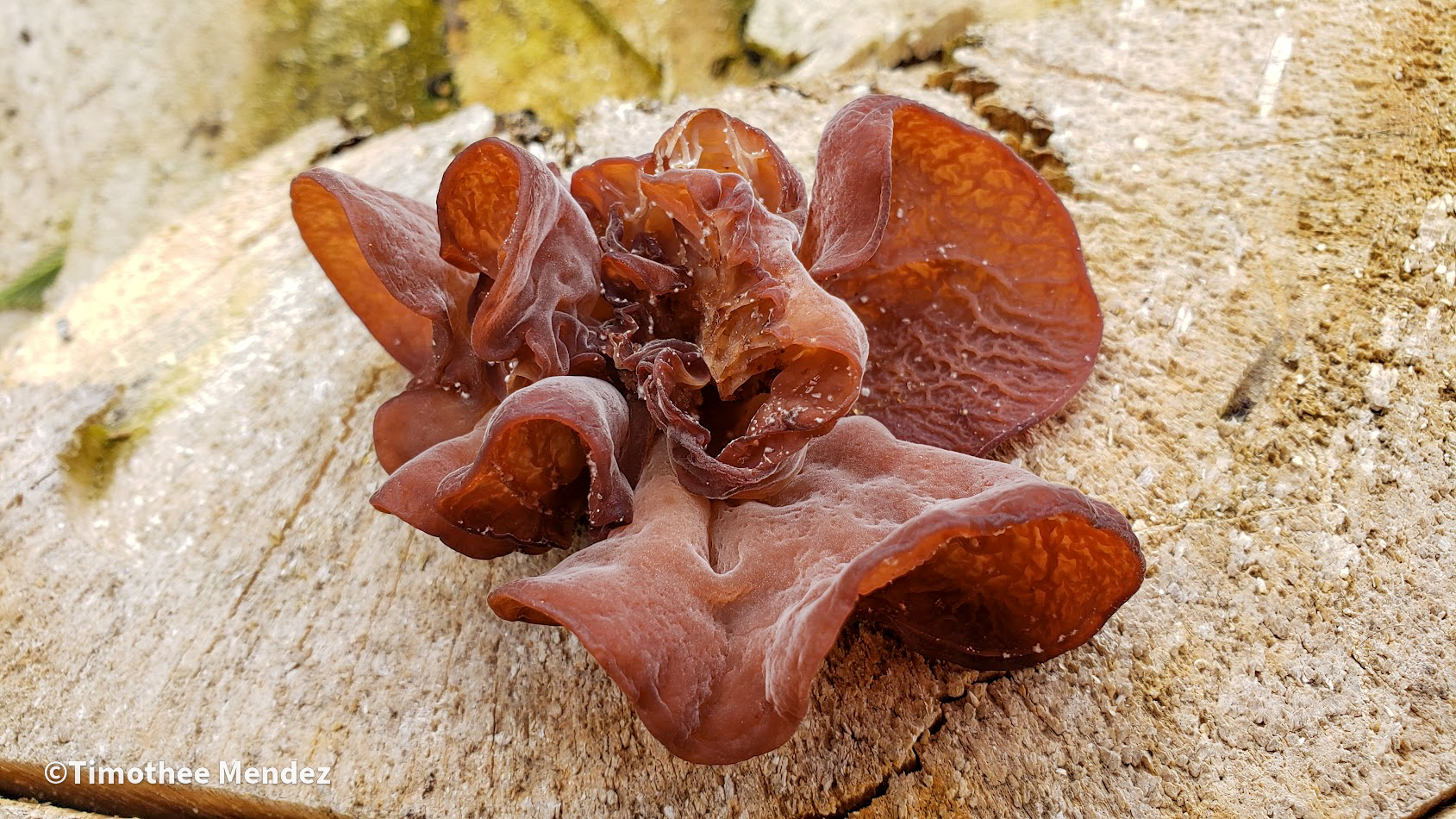
The first step in identifying a Wood Ear is to make sure it is growing on woody debris. If they’re growing directly from the soil or rocks, then you’ve probably got something else.
Wood Ears are brown, gray, or dark in color and often partially translucent. The upper surface of the ear-shaped mushroom is typically smooth, while the lower surface can have veinations, wrinkles, or other distinct patterns. Some species have identical upper and lower surfaces.
In some species (such as A. polytricha), the top surface of the mushroom is velvety and fuzzy.
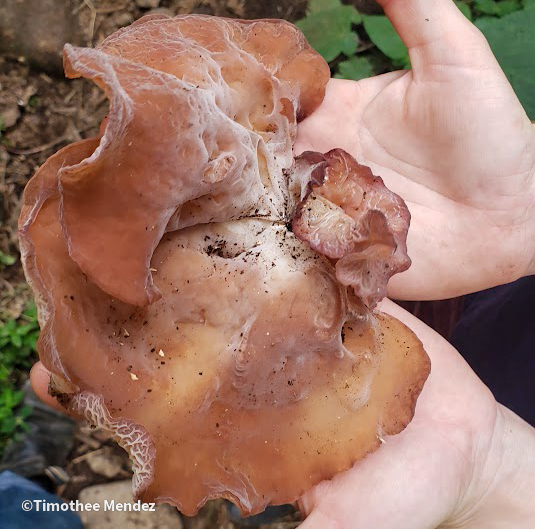
The actual shape of the mushroom can go from being very ear-shaped to more circular, elliptical, fan-shaped, or cup-shaped.
They grow from a very stout, rubbery stem.
When mature, they can be anywhere from 1-5 cm in size.
They most often have shelf-like growth with the “ear” pointed downwards to the ground, although there are exceptions. Wood Ears almost always grow in patches of several fruiting bodies and rarely individually.
Wood Ears may have a scattered fruiting pattern, although some species occur in clusters.
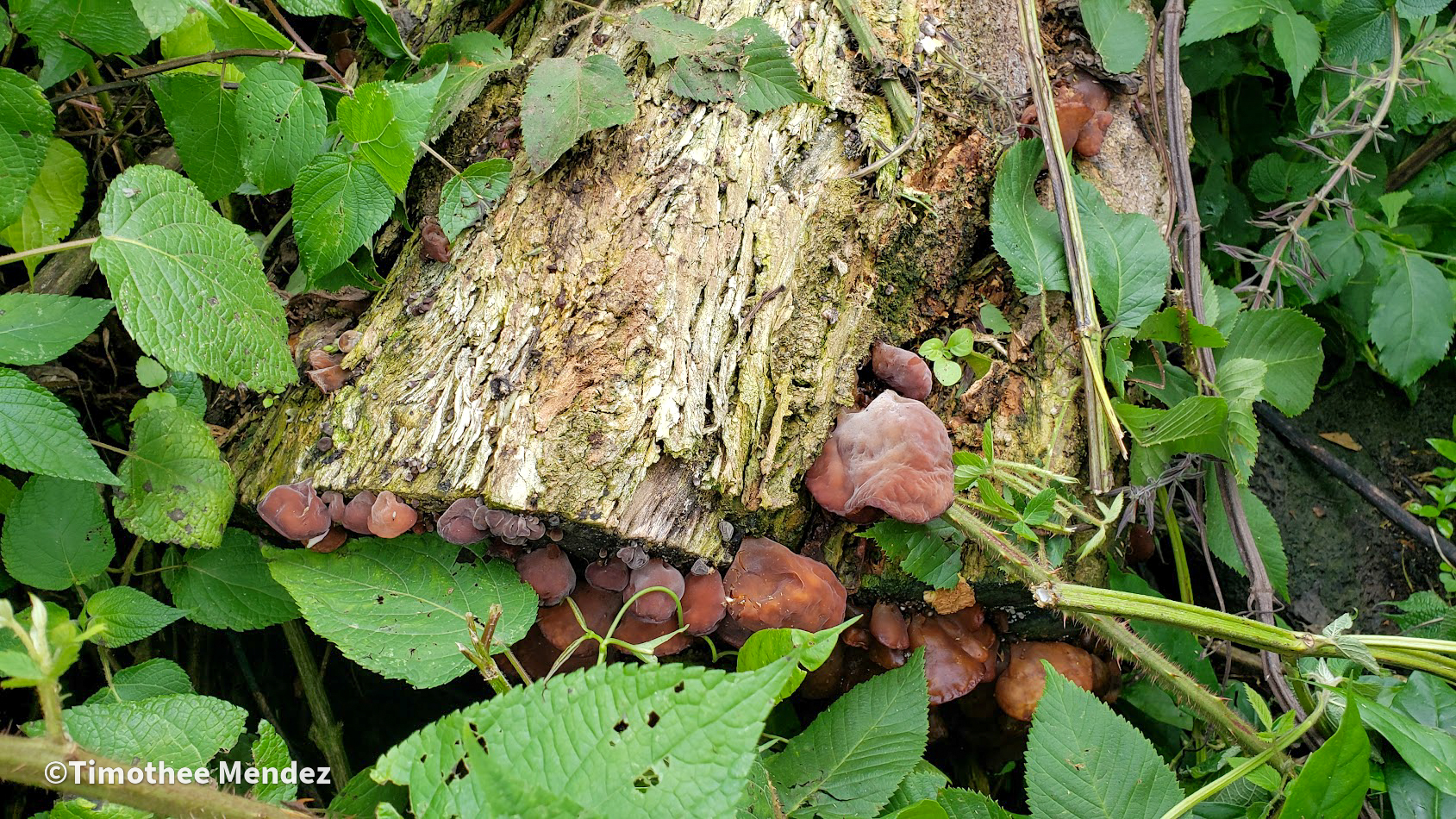
If you take a wood-ear mushroom and squeeze it between two fingers, you should notice that the upper and lower surfaces are made of two distinct tissues.
If you cut into the mushroom, these two distinct layers are easily visible. They’re a bit like a balloon, and if you’re careful, you can inflate them with air.
Identification Features of Wood Ear Mushrooms
- Grows on woody debris, not soil or rocks.
- Reddish-brown, gray, or dark-colored and often partially translucent.
- From ear-shaped to elliptical, cup-shaped, and irregular. Typically 1-5 cm in size.
- Rubbery, gelatinous, and jelly-like flesh.
- Smooth upper surface; the lower surface may have veinations, wrinkles, or distinct patterns.
- The underside may have a pale tone when young
- No distinctive odor or taste.
- White spore print
- The fruiting body becomes hard and black when dried out.
Some of the most common Auricularia species include:
- Auricularia auricula-judae: This is the classic European species which is smooth on both sides and a transparent-brown color. This was historically a complex that included similar species like Auricularia fuscosuccinea and Auricularia angiospermarum which occur in North America.
- Auricularia cornea: This species has a fuzzy upper surface that is typically brown, with a lighter-colored underside.
- Auricularia americana: This is a North American species that is widely distributed and grows on conifers.
- Auricularia polytricha: This species has thick flesh and a velvety or fuzzy upper surface. It can be grey to black.
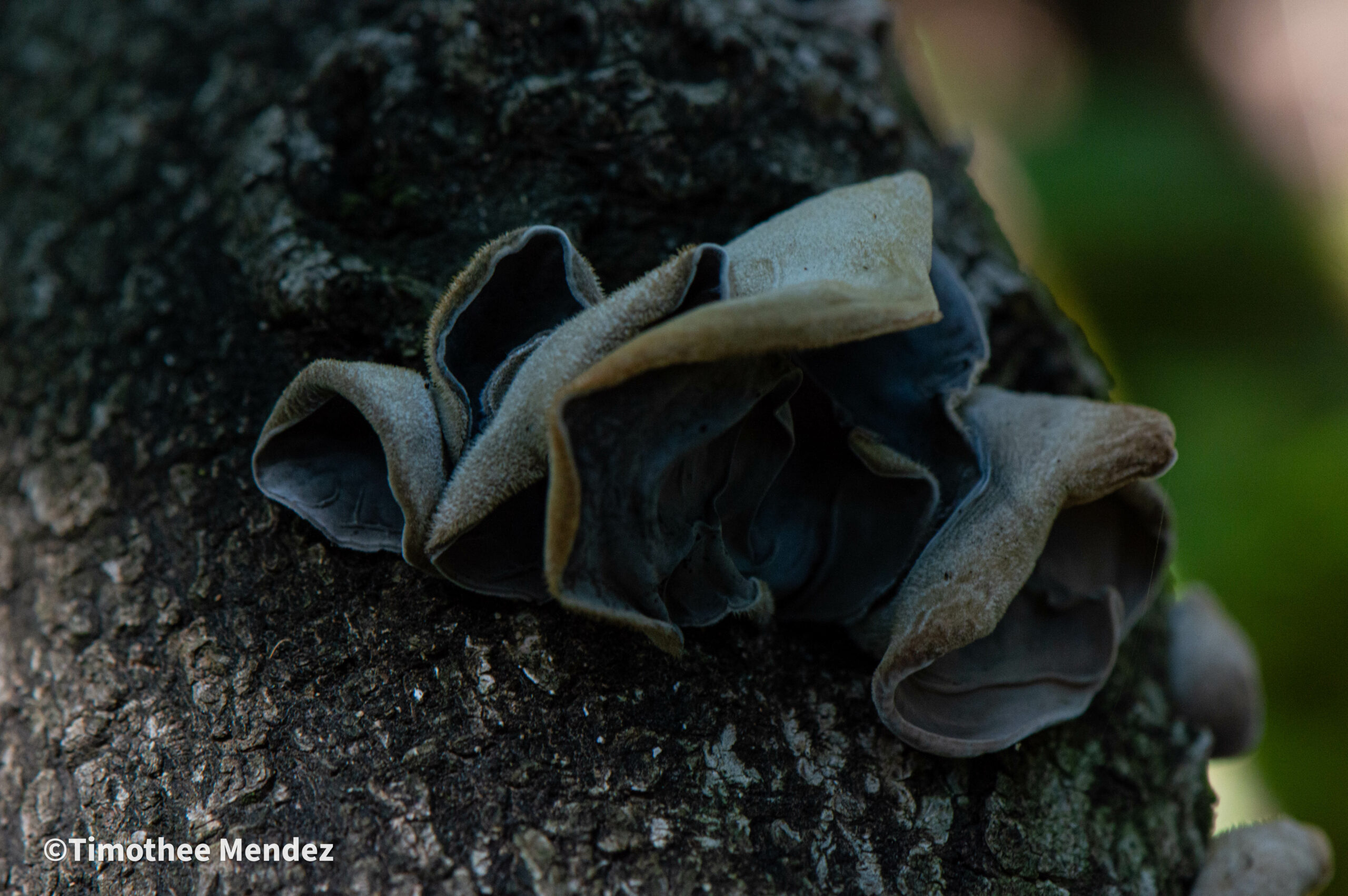
- Auricularia mesenterica: This species is really weird and grows more like a wrinkly crust on logs.
- Auricularia nigricans: This is a black wood ear species that is fuzzy on its upper surface.
- Auricularia heimur: This is the most consumed and cultivated Chinese species that is dark in color and not present in North America.
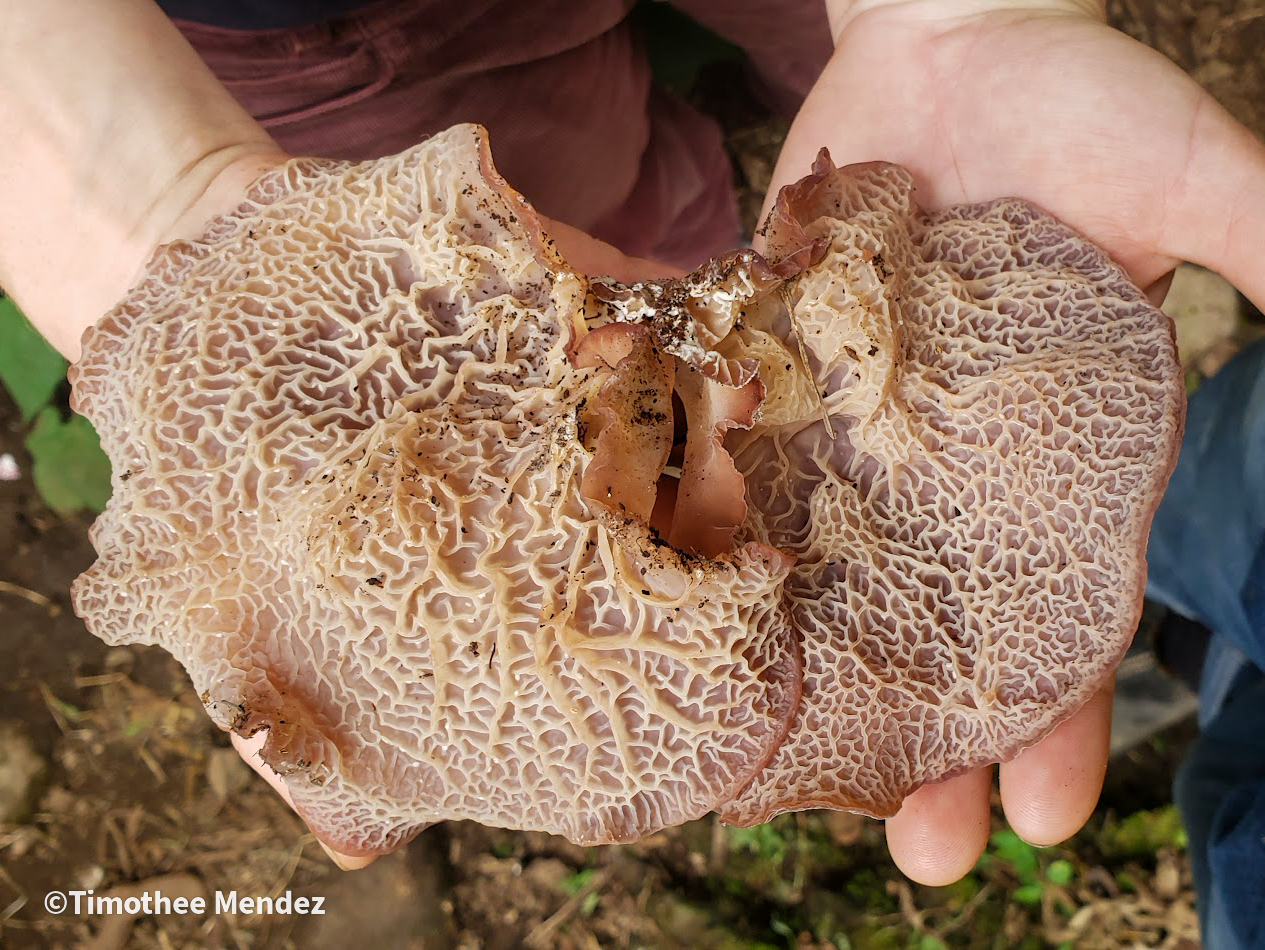
Wood Ear Mushroom Lookalikes
False Wood Ear (Exidia recisa)
There are many different types of Exidia, and some can look a lot like Wood Ears to the untrained eye. They are more or less the same color, and shape, and have the same jelly-like texture. The species Exidia recisa, also known as the Amber Roll, is particularly similar in appearance.
To begin, Exidia recisa tends to be much smaller than your typical Wood Ear, growing 2-3 cm in size but rarely bigger. They often grow in very tight clumps and appear like dense gummies when young. Wood Ears also almost always point toward the ground, while Exidia fruiting bodies tend to point upwards or horizontally. Exidia mushrooms also have a more purplish tinge and a ridged surface with depressions that look a bit like a 3D map. Exidia also tend to be more circular as opposed to elliptical.
Phaeotremella
These mushrooms also have a similar color and texture to Wood Ears and could easily be mistaken for them.
A big difference is that these grow in very tight clusters, with irregular shapes, and have a more coral or hydrangea-like structure.
Phaeotremella don’t form a concave ear-like structure, and they will never form an individual “ear” since they always grow as a cluster.
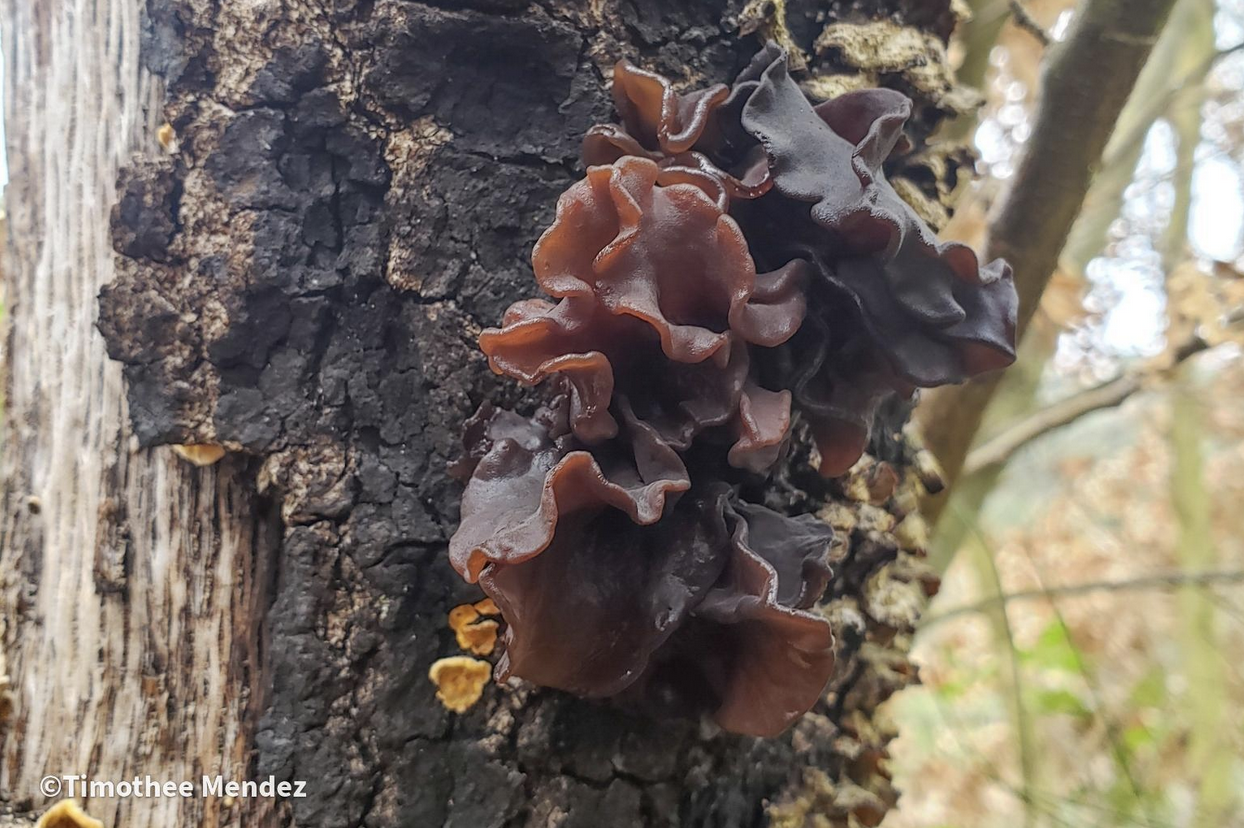
Cup Fungi (Pezizaceae)
There are many different types of cup fungi, some of which may resemble the shape and color of Wood Ears.
Generally speaking, cup fungi are much more fragile and brittle than Wood Ears.
They may have well-developed stems, and others form spherical cup-like shapes.

Where To Forage Wood Ear Mushrooms
Wood Ear mushrooms are a cosmopolitan species that do well in just about any forest with woody debris. They are typically fans of broad-leafed trees, but there is a species that occurs on conifers. Some of the most common broad-leaved hosts include Oak, Beech, Birch, Elder, Chestnut, Sweetgum, and Maple.
The Conifer Wood Ear has been reported on Pine, Spruce, Fir, and Hemlock.
Remember that Wood Ears are pretty opportunistic, so they´ll also be growing on less common shrubs and trees not mentioned here too.
Wood Ear loves environments with lots of humidity, and they thrive in the tropics. You can also find Wood Ears growing in urban and suburban areas with introduced tree species.
Due to the widespread habitat of Wood Ears, I won’t go into specifics about where to look. Just keep your eyes out for them, especially in broadleaved forests, and try to keep track of your local host trees.
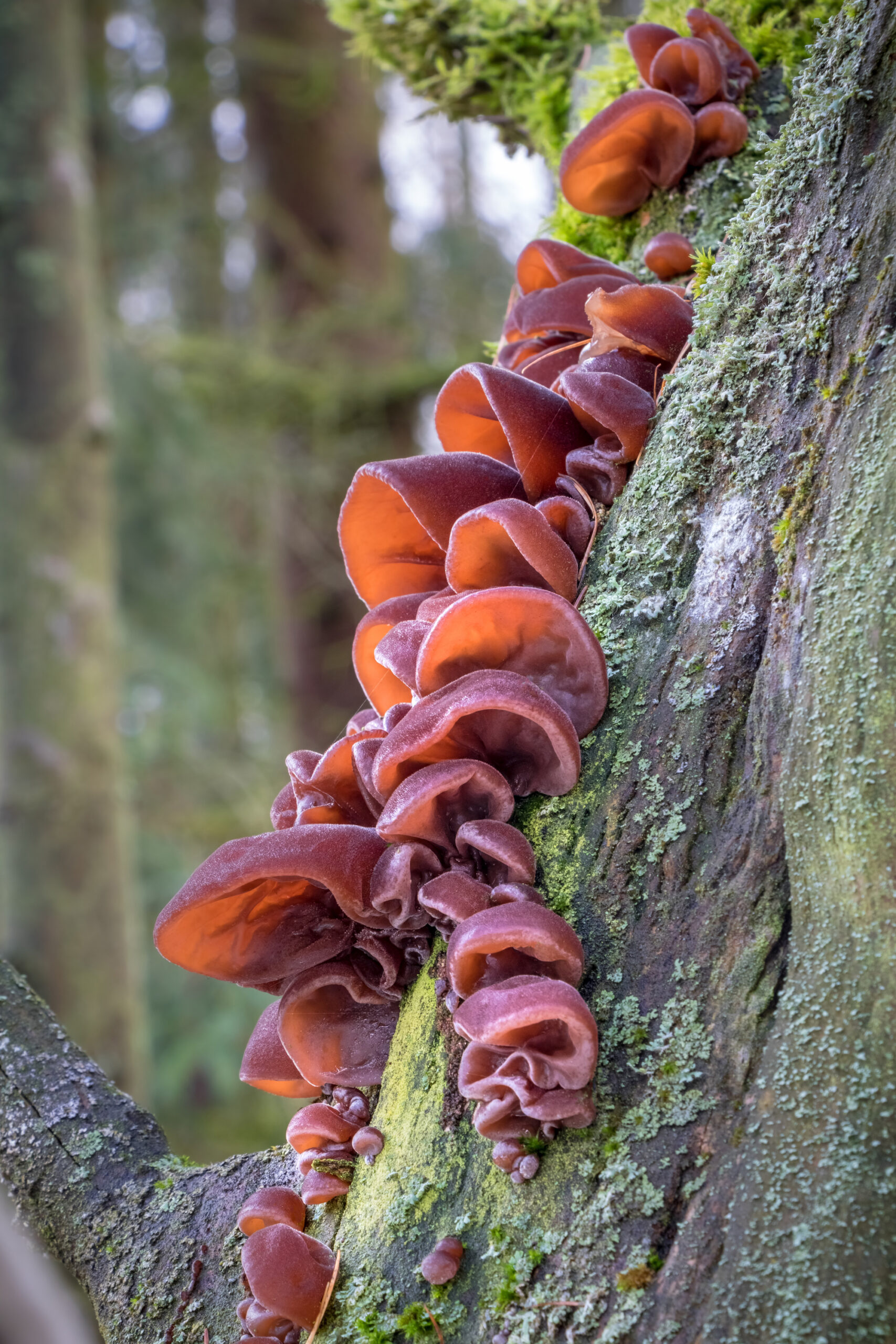
Best Time Of The Year To Forage Wood Ear Mushrooms
Wood Ear mushrooms are opportunists that can appear almost any time of year when their growth is suitable. They’re not too fussy about temperature; they just want it wet for an extended period. In areas with a distinct dry season, it is even possible to find them dried up directly in their habitat.
Many references consider them a cold-loving species, but I´d consider them cold-tolerant since they can also thrive in warmer temperatures. This being said, Wood Ears are one of the few mushrooms you can find early in the spring and late in the fall when it’s too cold for most other mushrooms.
In many parts of North America, Wood Ears tend to have their biggest flush in the spring and may opportunistically occur during other seasons. In areas with mild winters, like California, Florida, Spain, and Mexico, it’s possible to find them year-round.
Southeastern United States (April to July) – Wood Ears can be found year-round here, but they seem to have a peak season between April and July.
Northeastern United States and Canada (March to October) – As long as the temperatures aren’t too low and there is enough humidity, you can find Wood Ears. This being said they tend to be most abundant in spring (around May) and Fall (around October) as opposed to the mid-summer season.
California (October to June) – In California, you can find Wood Ears all year long due to the diverse bioregions. In areas with Mediterranean climates, you find them mostly in the winter and spring. In the summer, you´ll find them in coastal zones and montane forests with summer monsoons.
Pacific Northwest (Spring and Fall) – Again, you can find Wood Ears year-round in the Pacific Northwest, but there does tend to be a spring peak around May and a fall peak around October.
Colorado and Southwestern Sky Islands (June to September) – In these mountainous regions, the season is largely limited to summer, when the temperatures are adequate and there are monsoonal rains.
Midwestern United States (April to October) – There´s a long season in the Midwest, although it typically peaks in the spring.
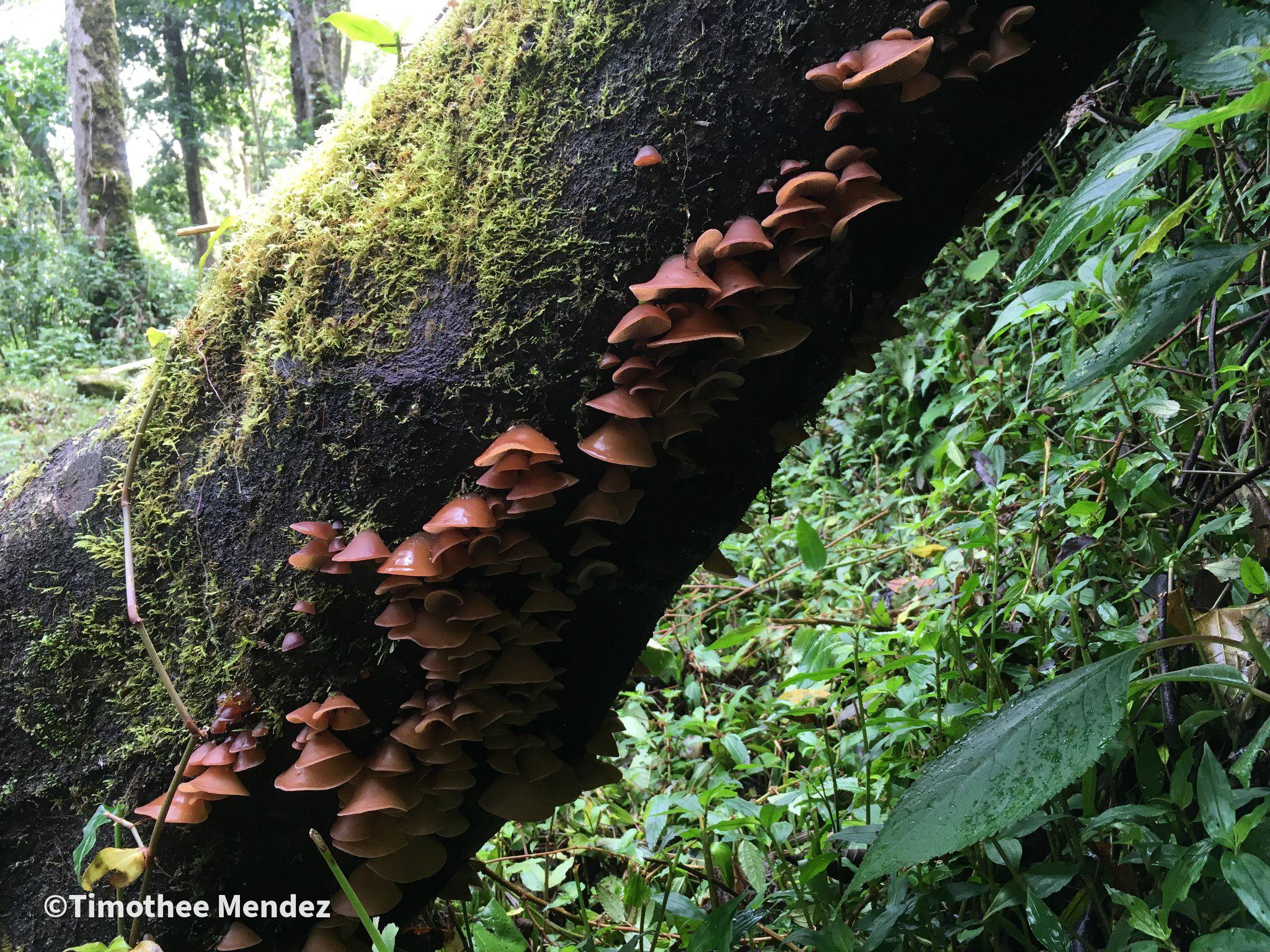
How To Forage Wood Ear Mushrooms
When foraging anything from a natural environment, it is important to do so ethically and responsibly. Don’t litter, cause erosion, trample vegetation, or carelessly disturb the natural environment. Try to tread lightly and leave as little of a trace as possible. If necessary, ask permission or get a permit before harvesting from a natural space.
For most foragers, Wood Ears aren’t going to be the most sought-after mushrooms of the season. No, I’ll be honest, what gets most people out into the woods are Chanterelles, Boletes, Lobsters, and other prized species. This being said Wood Ears are a great “bonus” mushroom you can harvest when there’s nothing else out or simply if you stumble upon a particularly prime patch.
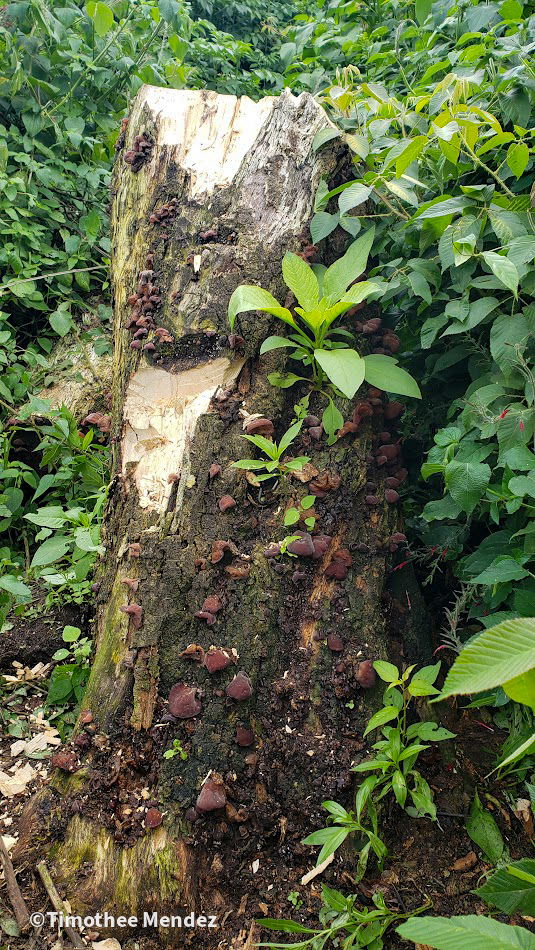
Whether you’re strictly looking for them or not, Wood Ears are found on woody debris of all shapes and sizes. Trunks, branches, stumps, and even small stems can be a host to wood ears. It’s not uncommon to see them on dead-standing trees or branches as well, so don’t forget to look up.
Once you find a patch of Wood Ears, the first thing you’ll want to do is see if they’re in good condition for harvesting. They shouldn’t be excessively slimy or easily falling apart when handled. Towards the end of their lives, it is not uncommon to see them covered in small, white flies. This doesn’t mean they’re goners yet, but it does suggest they probably won’t withstand too much time before cooking. Oftentimes, you’ll see mushrooms in various stages of decomposition and growth in a single patch, so make sure to select your harvest carefully.
It’s also not a bad idea to scope the general area where you’ve found the wood ears. There may be other branches or woody debris from the same tree in the area that may also be infected with wood-ear mushrooms.
After admiring the mushrooms for a while, it comes time to harvest. I recommend always leaving 20–35% of the mushrooms you find in a patch, if not more. Leave any that are past their prime and leave small ones that have yet to mature. You can harvest directly by picking the mushroom; just make sure not to damage the woody debris. Take care that your mushrooms aren’t damaged during transport, as they can be fragile. Baskets are great for this.
Once you get home, I recommend cleaning them up nicely with water and then placing them to drain somewhere dry. If they’re already a bit old, it’s best to eat them immediately, but if they are prime, they can last 3-5 days, depending on conditions.
Cooking With Wood Ear Mushrooms
Wood Ears aren’t your typical “sautee with garlic and onion” type of mushrooms. While you can certainly cook them like this, and they’ll probably be enjoyable, it’s not really how this mushroom best shines.
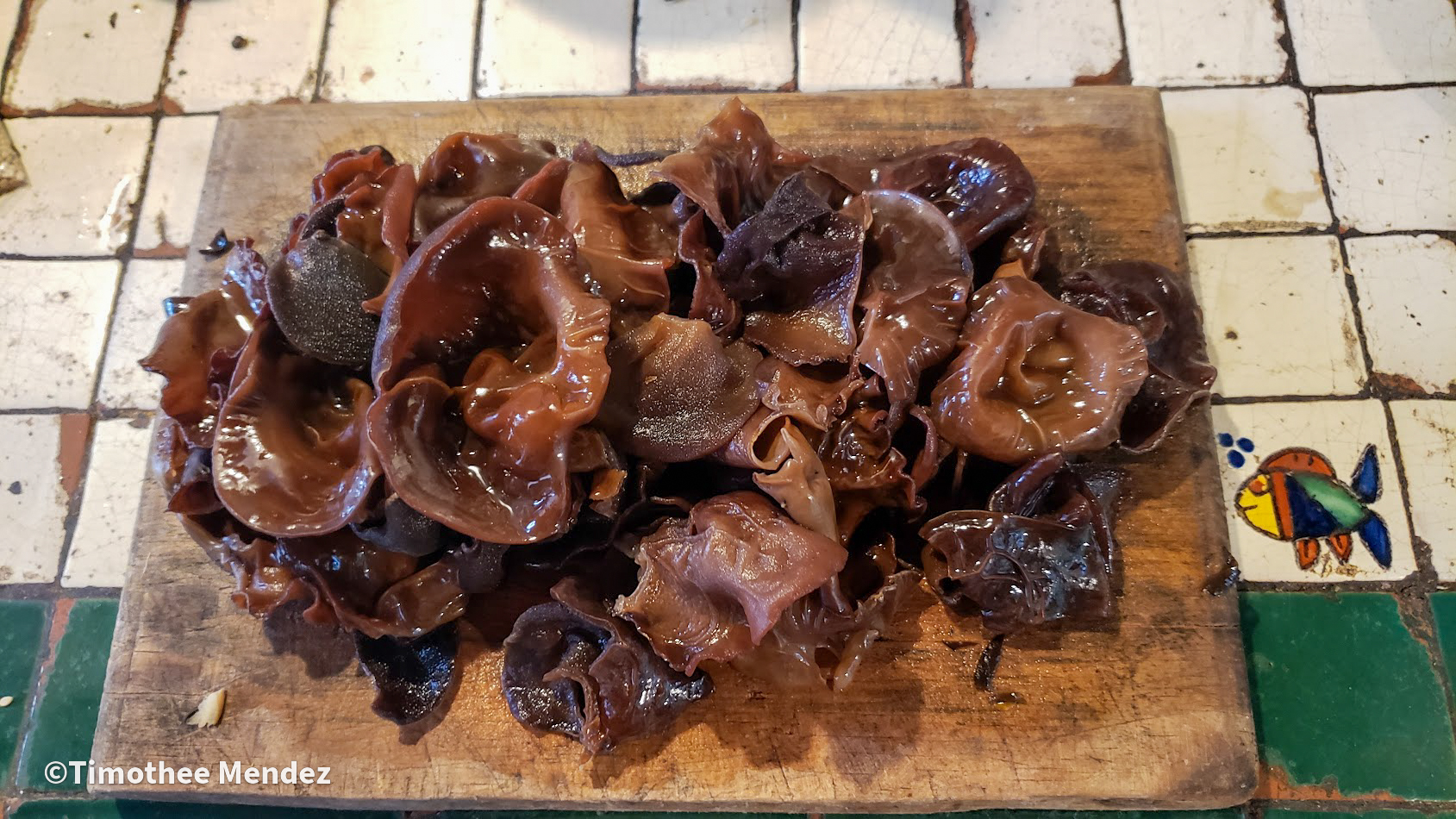
While there are a million ways to get creative with it, there’s no need to reinvent the wheel. I tend to cook these mushrooms in Asian-inspired stir-fries and soups, mixed with veggies, chili oil, miso, soy sauce, sesame oil, eggs, and whatever other ingredients the kitchen has to offer. In most of my recipes, they’re not typically the star of the show but simply offer a delightful chewy texture in addition to the other ingredients.
When it comes to cooking, I typically like to cut the mushroom into thin strips about 1 cm across and 2-3 cm in length. These can be added at any time during the cooking process; just be sure to give them a minimum of 15-20 minutes of cooking. You can also add them whole without chopping them into a stir-fry if you enjoy the texture.
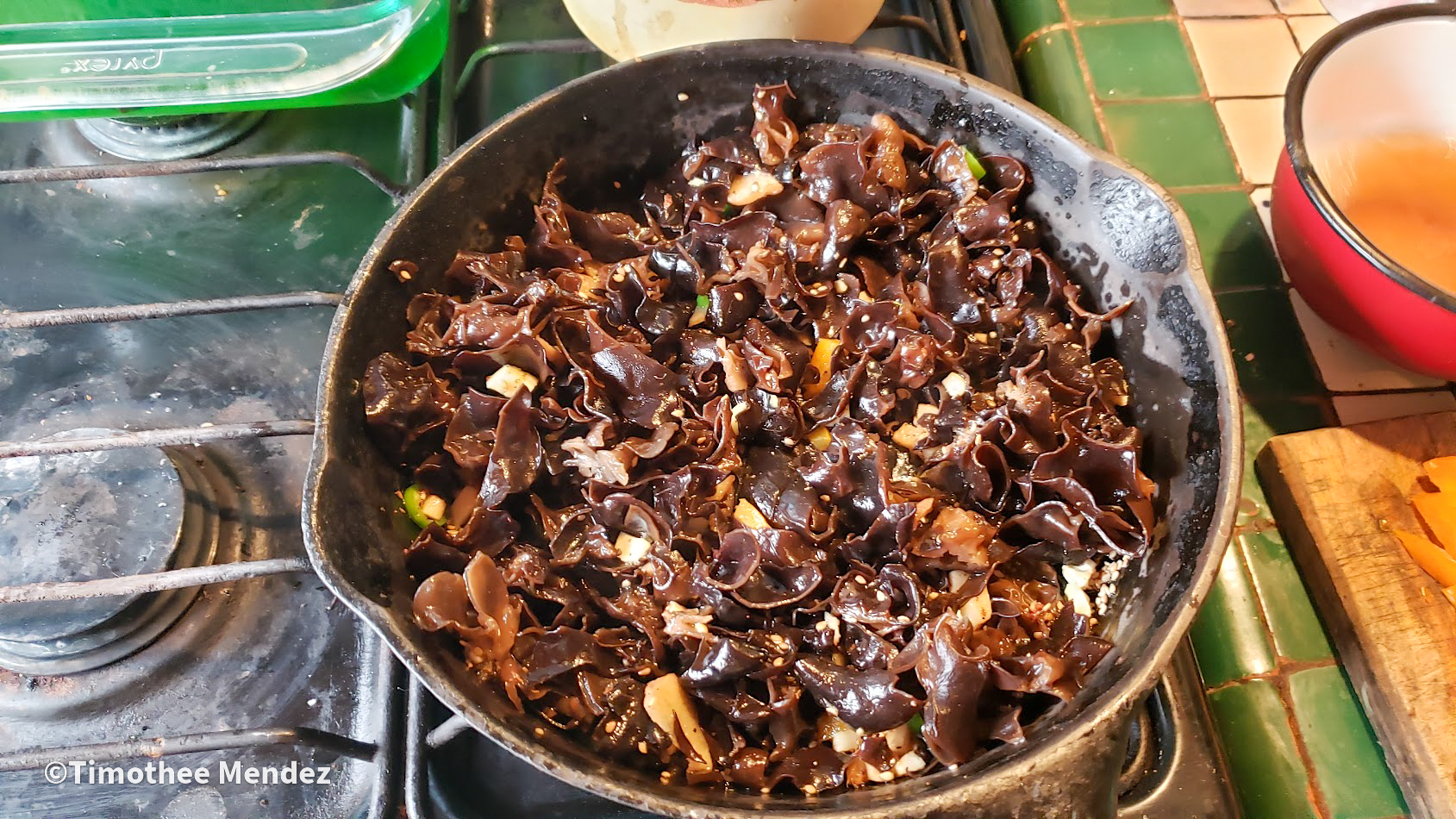
Some of my favorite recipes using Wood Ears are stir-fries with eggplant or cabbage. I like to start by sautéing garlic, ginger, onion, and the veggies/wood ears. Once that’s mostly cooked, finish it off with a blend of soy sauce, sesame seed oil, szechuan, a bit of brown sugar, water, rice vinegar, and salt to taste. You can thicken the sauce with a bit of cornstarch as well. If you like it spicy, throw in some red chili flakes or freshly chopped chili. Serve this with a steaming bowl of hot rice. If you want to make a soup, you could easily take the same ingredients and add miso or a broth of your choice.
If you want to experiment with wood ears, look up a recipe for Wood Ear salad. It is freaking incredible and will change your mind about this fabulous mushroom.
Preserving Wood Ear Mushrooms
While they can be preserved in several ways, by far the best way to do it is by drying them. They dry easily, and as long as they’re in good condition they won’t rot in the process. You don’t even need a dehydrator, although it does help. Simply by placing them in a sunny spot, near the stove, or anywhere with plenty of ventilation, you’ll manage to get these mushrooms pretty dry. Make sure they’re crispy before placing them into an airtight jar or ziplock bag. For cooking, simply rehydrate them in water and watch them inflate five times their size!
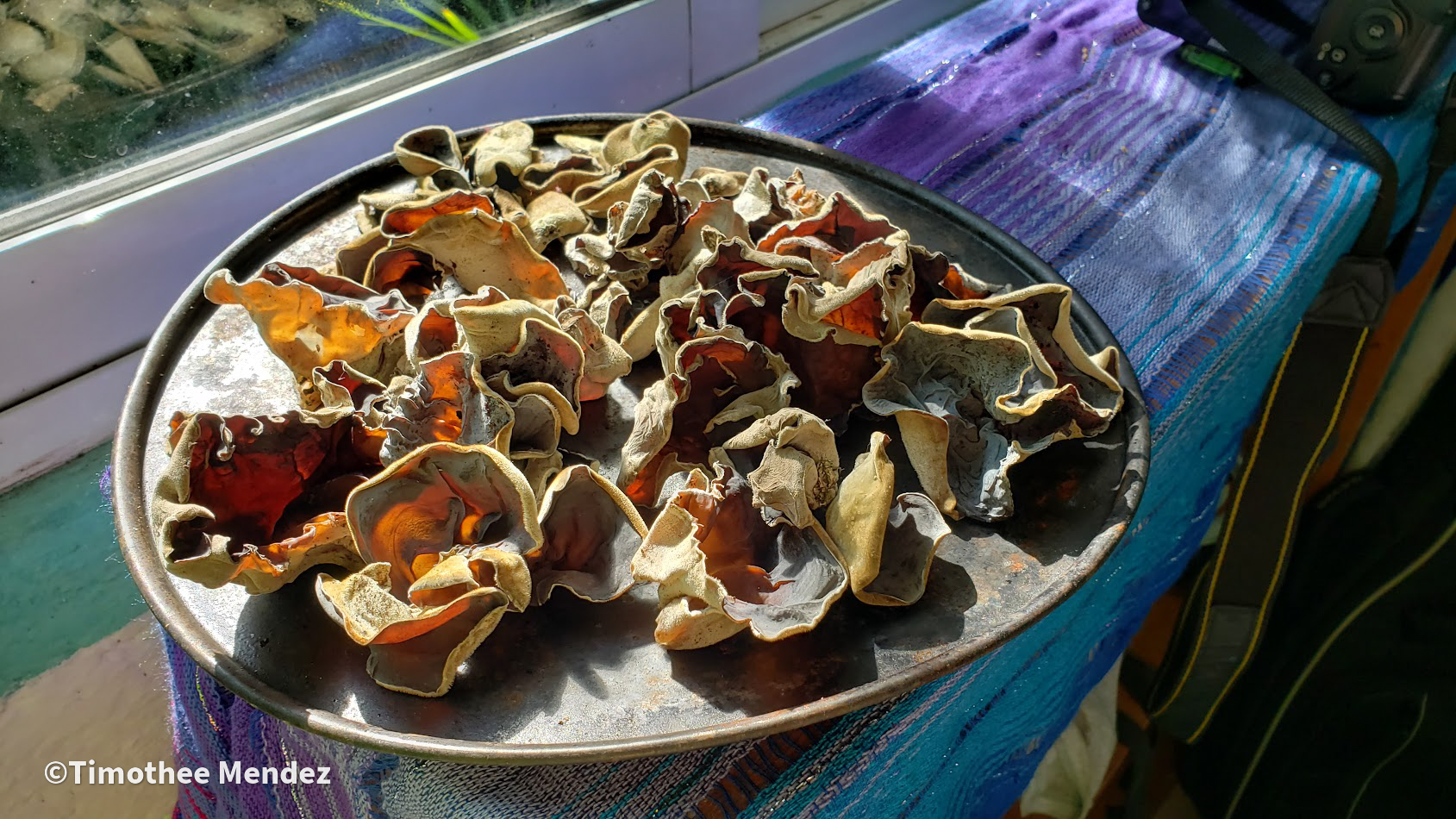
Alternatively, you could also do the “cook and freeze” method if you have plenty of freezer space. To do this, simply sauté or steam the mushrooms, then freeze them. If you don’t cook them first, their cell walls will burst, and you’ll end up with a slimy mess once you defrost them.
While I’ve never seen it done, I’m certain Wood Ears could be interesting for pickles. They have a delightful texture and probably won’t get as slimy as other large-fleshy fungi do. Perhaps they’d even be interesting inside kimchi or a ferment like that. Just make sure to cook the mushroom thoroughly before pickling or fermenting to make sure it will be easily digestible.
Mushroom Foraging Guides
Looking for more Mushroom Foraging Guides?
- Reishi Mushrooms
- Turkey Tail Mushrooms
- Cauliflower Mushrooms
- Pigs Ear Mushrooms
- Honey Mushrooms
- Maitake (Hen of the Woods Mushrooms)
- Matsutake
- Velvet Foot (Wild Enoki)
